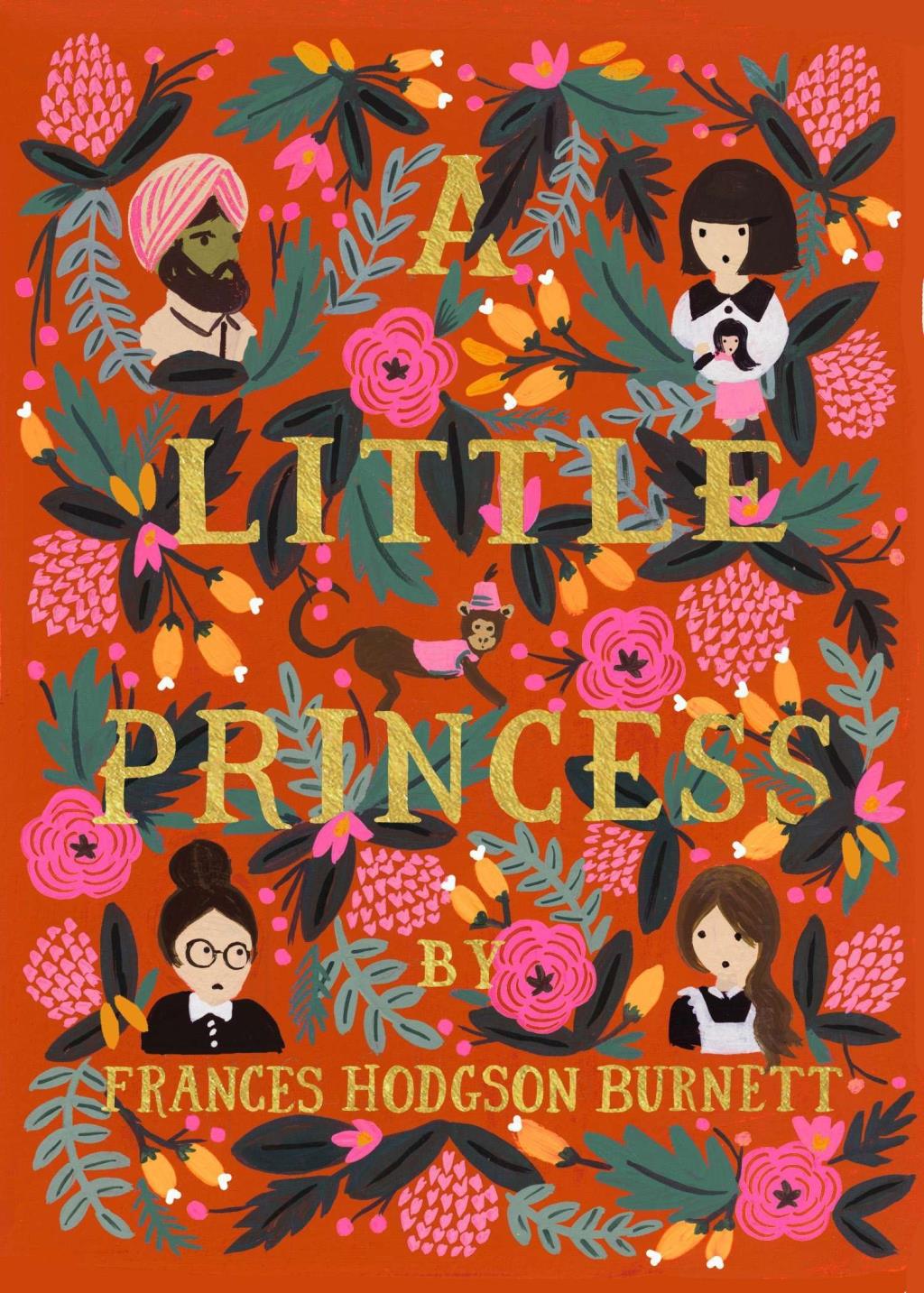
A Little Princess by Frances Hodgson Burnett is a whimsical, classic book about an
intelligent little girl who suddenly faces tragedy and struggles being kind and optimistic,
surrounded by people who want to tear her down. Burnett brings you into an imaginative child’s
perspective, as she makes the most of a bleak world while showing kindness and empathy to
even those who hurt her. We follow young Sara Crewe’s experience of poverty as she teaches
us the importance of empathy, perseverance, and friendship to carry through adversity.
The story begins with Sara, the heroine, and her father arriving in London from India,
where she is put into a strict boarding school, admired by her peers and teachers for her wealth,
beauty, and intelligence. Her entire life at the school changes once her father dies and she is left penniless with no one to care for her. She goes from a respected top student to a belittled
scullery maid of the school. Her imagination and strong character get her through the abuse of
the headmistress, as well as her kind heart and love for her friends. Burnett’s writing and use of
imagery immerses the reader into vivid scenes and feelings—of Sara’s despair, anger, as well
as her friends’ sympathy and admiration for her character. Written from the perspective of a
young, seven-year-old girl, we see how Sara navigates the cruel and unforgiving world as she
experiences grief on top of this new, wretched life.
Sara is optimistic and generous, a stark contrast to her miserable environment and Ms.
Michen, a bitter woman with a hatred for Sara. Sara is whimsical and carefree in the beginning,
being wealthy and adored. She is more lovable because of her generosity and kindness towards
others, like a princess, no matter their status compared to hers. As she falls into a penniless
state, she stays a dignified “princess” and continues to treat everyone kindly, even those who
abuse her, and is respected by her peers because of it, becoming a strong, positive influence on
others. She is imaginative and hopeful, overcoming horrible experiences with empathy and
kindness. Nevertheless, Sara is relatable; in the face of hardship, she isn’t always optimistic and
“princess-like”. She feels resentment about her situation, and on one particularly hard day, she
takes her anger out on her beloved doll her father had gotten her. In this poignant scene, Sara
breaks down, tired and angry, that no one cared to help her, and lashes out at her lifeless doll.
Even in anger, she stays dignified and kind, apologizing to her doll.
Though A Little Princess is a fantastic book with great characters, who are also
exceptional role models for little girls, it tends to have problematic undertones and stereotypes
of people that doesn’t bring a positive message to children. The negative idea brought out by
Burnett’s characterization of Ermengarde, Sara’s close friend, and Miss Amelia, Ms. Michen’s
sister, is that fat characters equal stupid characters. Burnett portrays Ermengarde as dimwitted
and slow, and Ms. Amelia as timid and dumb, but also brings up their weight and size when
describing them as so. Ermengarde, in particular, is subject to fatphobia, mostly by the author
rather than the characters around her. When Sara first meets Ermengarde, she is described as
being behind everyone in class and an intellectual anomaly in her family, the only “dumb one”
among multi-linguists and readers. The story seems to link possible learning disabilities to her
size. Moreover, Ermengarde compares herself to Sara, saying she’s “too fat to be a princess”
and is Sara’s subpar companion in everything—learning, languages, and beauty. Though it isn’t
explicit, the emphasis on Ermengarde size when describing her intelligence is repeatedly
brought up, even through Sara’s overarching message that looks aren’t what make a princess.
Overall, A Little Princess is an inspiring story for people of all ages with a generally great
message to children of what it means to be a “princess,” teaching them to be kind and generous
like Sara. It centers around a mostly female cast of characters and is a piece of strong feminist
work of the early 19th century. In a story about magic, wonder, and princesses, it also has
strong messages about kindness, empathy, inclusion and privilege. The most memorable
scenes are the ones where we really see the impact of poverty on Sara. Sara stays dignified
and kind after becoming a scullery maid but has days where she feels the weight of her
situation, and like any child would, she breaks down and uses her imagination to get her
through her sadness. We see past Sara’s perfection and feel her anguish for her sad reality. It’s
through these scenes where we see the power of imagination and overcoming through
perseverance. I’d recommend this to everyone, young girls especially, with its optimistic
message about character as well as the overall message of kindness and empathy towards
anyone regardless of their differences.
Check out A Little Princess from the Newport Beach Public Library!
